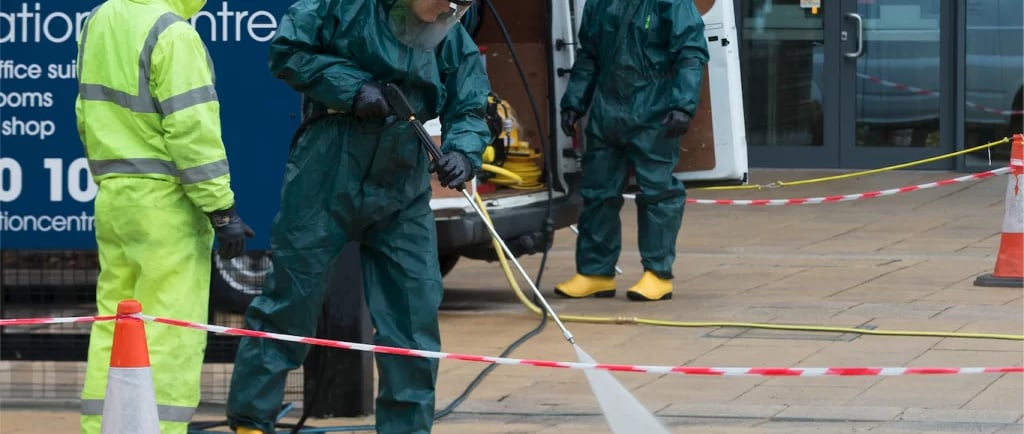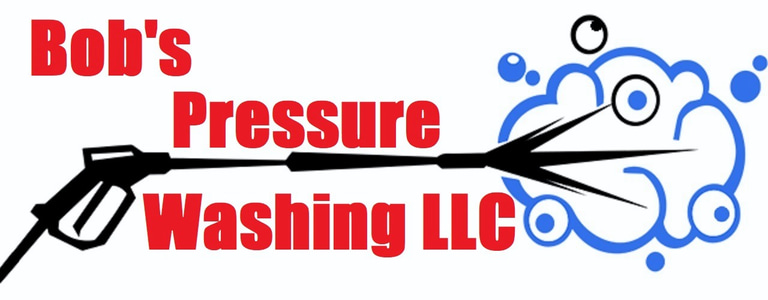Comprehensive Safety Practices for Operating a Pressure Washer
The operation of a pressure washer, while relatively straightforward, harbors various potential risks that necessitate a thorough understanding of safety practices.
EXTERIOR CLEANING SERVICE PROCESSESBASIC HOME MAINTENANCECURB APPEALPRESSURE WASHING SERVICES


Introduction to Pressure Washer Safety
The operation of a pressure washer, while relatively straightforward, harbors various potential risks that necessitate a thorough understanding of safety practices. Pressure washers, by design, emit a powerful stream of water that can cause significant injury or property damage if not handled correctly. Hence, it is imperative to underscore the importance of observing safety protocols to mitigate these risks effectively.
Pressure washers are versatile tools, commonly employed for cleaning a wide range of surfaces, from concrete driveways to delicate wooden decks. However, this versatility does not come without its challenges. The high-pressure water jet can lead to lacerations, bruises, eye injuries, and even injections of water and other contaminants into the skin. Improper use can also result in harmful electrical hazards, especially when using electric pressure washers near water sources.
Besides personal injury, improper handling of a pressure washer can also result in significant property damage. The powerful water jet can strip paint, break windows, and dent surfaces if used improperly. Moreover, the high-pressure can cause dislodgement of harmful materials like lead-based paint or mold, posing further health risks.
Given these dangers, it is clear that a thorough comprehension and adherence to pressure washer safety protocols are essential. These measures are not just about personal safety; they also encompass the protection of non-operators, pets, and nearby property. Enhancing our awareness and understanding of these safety practices is the first step towards a safer and more effective use of pressure washers.
The following sections will delve into specific safety measures, best practices, and guidelines to ensure that pressure washer operations remain safe and efficient. Establishing these foundational safety habits is crucial for anyone looking to utilize a pressure washer, whether for professional tasks or residential cleaning projects.
Personal Safety Gear: Essential Protective Equipment
When operating a pressure washer, personal safety should be a top priority. The use of appropriate protective equipment is crucial to prevent injuries from the high-pressure water spray, hazardous chemicals, and flying debris. Key safety gear must include safety goggles, gloves, non-slip shoes, ear protection, and protective clothing.
First and foremost, safety goggles are indispensable. They shield your eyes from water spray, which can ricochet off surfaces and debris. Additionally, if you're working with cleaning solutions or chemicals, goggles prevent inadvertent splashes from causing eye irritation or injury.
Gloves are another essential piece of protective gear. Durable, chemical-resistant gloves protect your hands from harsh detergents and from being cut or scraped by sharp objects. Gloves also provide a better grip on the pressure washer, lessening the risk of dropping or mishandling the equipment.
Slips and falls are common hazards when operating a pressure washer, especially in wet environments. Non-slip shoes are crucial to prevent slips and ensure stability. These shoes should have sturdy, slip-resistant soles to maintain traction on wet surfaces and prevent accidents.
Operating a pressure washer can be noisy, especially in enclosed or echo-prone environments. Ear protection, such as earplugs or earmuffs, is necessary to safeguard your hearing from prolonged exposure to high decibel levels. Hearing loss can occur over time if adequate protection is not utilized.
Lastly, protective clothing is vital to prevent skin exposure to harmful chemicals and debris. Long sleeves, pants, and waterproof aprons can offer a barrier against potential splashes from cleaning solutions. Ensure the clothing is comfortable, allows for freedom of movement, and is not loose enough to get caught in machinery.
By prioritizing personal safety gear, operators can significantly reduce the risk of injuries and work more effectively with pressure washers. Safety goggles, gloves, non-slip shoes, ear protection, and protective clothing form the foundation of a comprehensive safety strategy. Always inspect your safety equipment before use to ensure it is in good condition, and replace any damaged items immediately.
Pre-Operation Safety Checks
Before operating a pressure washer, performing thorough pre-operation safety checks is essential to ensure a safe and efficient cleaning process. Start by meticulously inspecting the pressure washer for any visible damages or leaks. Examine the hoses and connections to confirm that they are secure and free from wear and tear. Any damaged parts should be replaced immediately to prevent accidents or equipment failure during operation.
Next, verify that the equipment is in good working condition by checking the oil levels, fuel levels, and filter cleanliness if applicable. Ensure the pressure washer is placed on a flat, stable surface to avoid any tipping or instability. Pay close attention to the water supply, verifying that the inlet pressure is within the recommended range specified in the user manual. An inconsistent water supply can lead to inadequate pressure, affecting the quality of the cleaning and potentially damaging the pressure washer.
The user manual is a critical component of operating a pressure washer safely. It contains vital information specific to your model, including safety instructions, operational guidelines, and maintenance tips. Before starting, thoroughly read and understand the user manual to acquaint yourself with any unique cautions or procedures pertinent to the equipment.
Conducting a safety briefing is another crucial step, especially if operating the pressure washer in a team setting. Ensure that all team members are aware of their roles and responsibilities, potential hazards, and emergency protocols. Clear, concise communication is key to preventing mishaps and ensuring a cohesive workflow.
Lastly, maintain a clean and clutter-free work area. Ensure the surrounding space is clear of bystanders, pets, and unnecessary obstacles. This proactive measure minimizes the risk of tripping hazards and distractions, creating a safer environment for the operator and those nearby.
By diligently performing these pre-operation safety checks, you can significantly reduce the risk of accidents and extend the lifespan of your pressure washer. These precautions, grounded in reading and adhering to the user manual, serve as the foundation for safe and effective pressure washing practices.
Safe Operation Techniques
Operating a pressure washer safely requires adherence to several critical practices. Firstly, it is paramount to maintain a firm grip on the pressure wand, as this aids in maintaining control and precision during use. A secure hold ensures that the wand does not slip, preventing unintended damage to surfaces or injury to the operator. Equally important is keeping a safe distance from the surface being cleaned. This precaution is necessary to avoid accidental injury from debris or high-pressure water streams, which can cause serious harm.
Applying the appropriate pressure setting for different surfaces is another essential technique. Various materials react differently to high-pressure water; hence, adjusting the pressure based on the surface type ensures effective cleaning without compromising the integrity of the material. For instance, delicate surfaces like wood require lower pressure settings compared to sturdier surfaces such as concrete.
Further, understanding how to avoid kickback and recoil is critical for safe operation. Kickback occurs when the pressure from the wand pushes back unexpectedly, which can lead to loss of control. Mitigating kickback involves starting with the lowest pressure setting and gradually increasing it. This method reduces sudden force and helps maintain stability.
Properly managing water pressure is crucial in preventing equipment damage and personal injury. Regularly inspecting the water pressure levels ensures that the machine operates within safe limits. Moreover, safe handling of hoses and cords is necessary to prevent tripping hazards. Ensuring that hoses and cords are neatly arranged and free from kinks or tangles reduces the risk of accidents on the job site.
In summary, adhering to these safe operation techniques when using a pressure washer not only enhances the efficiency of the cleaning process but also safeguards the well-being of the user. By following these best practices, operators can confidently use pressure washers, ensuring a safe and effective experience.
Handling Chemicals and Detergents
When operating a pressure washer, the use of chemicals and detergents necessitates rigorous adherence to safety protocols. Chemicals, though essential for effective cleaning, can pose significant health hazards if improperly handled. First and foremost, always wear appropriate protective gear, including gloves, goggles, and protective clothing, to shield yourself from any potential exposure to harmful substances. This protective measure is paramount to ensure personal safety during the cleaning process.
Adherence to manufacturer instructions is crucial when diluting and applying chemicals. Each chemical should come with specific guidance on the correct proportions to mix and how to safely use it. Ignoring these instructions can not only reduce the effectiveness of the cleaning process but also increase the risk of chemical burns or inhalation of hazardous fumes. Therefore, always read and follow the guidelines provided by the chemical manufacturers to mitigate any health risks associated with mishandling.
Additionally, it is important to have a comprehensive understanding of the health risks posed by various chemicals. For instance, some detergents may contain irritants that can cause respiratory issues or skin reactions. Awareness of these potential risks will help in taking the necessary precautions to prevent adverse health effects. In scenarios where chemicals must be stored, ensure they are kept in a well-ventilated area, away from direct sunlight or heat, and in their original containers with labels intact to avoid accidental misuse.
Proper disposal of chemicals and detergents is another critical aspect of safe handling. Improper disposal methods can lead to environmental pollution, affecting both wildlife and human health. Always follow the recommended disposal guidelines provided by the manufacturer or local hazardous waste disposal regulations. These protocols often involve taking the chemicals to designated disposal centers where they can be treated or recycled safely.
Environmental considerations should also be factored into the use of chemicals with pressure washers. Opting for environmentally friendly detergents reduces the ecological footprint of cleaning activities. Such products are designed to be biodegradable and less harmful to aquatic life, ensuring that your cleaning practices are both effective and sustainable.
Aftercare and Maintenance for Continued Safety
Post-operation practices are essential to ensure the safety and longevity of your pressure washer. Proper shutdown procedures should be the first step after completing any task. Start by releasing the pressure valve to avoid any residual pressure build-up that could cause an unexpected discharge. Next, turn off the engine or motor and disconnect the water supply to prevent leaks and potential damage.
Cleaning the machine immediately after use is critical. Begin by removing any debris or dirt from the exterior surfaces of the pressure washer. Pay close attention to the nozzles and make sure they are free from obstructions that could affect performance. Additionally, flushing out the hoses and gun with clean water helps eliminate any detergent or residues that might harm the internal components.
Inspection follows cleaning. Regularly check the machine for visible signs of wear and tear. Examine hoses and connections for any cracks or loosening that could result in leaks. Similarly, inspect the O-rings and seals to ensure they are in good condition. Early detection and replacement of worn-out parts can prevent potential hazards during future use.
Proper storage of your pressure washer is equally important. Ensure the machine is fully dry before storing to prevent rust and corrosion. Storing the equipment in a cool, dry place away from direct sunlight will help maintain its condition. For electric pressure washers, be sure to unplug the device and coil the power cord neatly to avoid twisted wires.
Routine maintenance goes a long way in preserving the functionality and safety of your pressure washer. Regular servicing as recommended by the manufacturer should never be overlooked. This includes oil changes for gas-powered models, lubrication of critical moving parts, and software updates for advanced models. Keeping a maintenance log can help track when each part was last serviced, ensuring nothing is missed.
Incorporating these aftercare and maintenance practices not only enhances the lifespan of your pressure washer but also ensures it remains safe for future use. By following these guidelines, you contribute to a safer operating environment and more reliable performance of the equipment.
